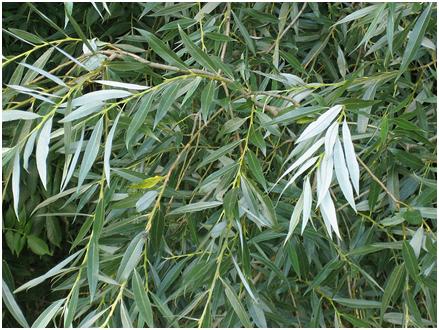 Species: Salix alba
Species: Salix alba
Common names: White Willow
History/Folklore:The use of Willow bark has been noted as far back as 400 BC (the time of Hippocrates). To help reduce fever and inflammation, patients were advised to chew on the bark of the Willow. In China and Europe, Willow bark has been utilized in the treatment of pain (low back pain and osteoarthritis), headaches and inflammatory conditions.. In the late 1820’s the active ingredient was isolated from willow bark and identified as the compound salicin. In the 1850’s a synthetic version of salicylic acid was created because it was time consuming and costly to extract the compound from Willow bark. Due to many cases of stomach ulcers and bleeding from the use of salicylic acid, the German company Bayer created acetylsalicylic acid (aspirin) to lessen these effects.
Willow bark is considered safer for the stomach because the salicin is converted within the body to salicylic acid instead of being ingested directly. There are also additional compounds in Willow bark that work together with the salicin to provide pain relief and anti inflammatory benefits. Aspirin does not contain these added compounds. Willow bark can also be used along with other herbs(such as Meadowsweet) to increase the benefits.
Appearance: A medium to large tree growing to 80 feet and having an irregular, often leaning crown. The bark is grey brown and is deeply fissured in older trees. Leaves are grey green with a whitish underbelly.
Parts Used: Bark
Collection: Prune tree in early spring, and strip bark (down to heartwood). Use fresh or dry.
Actions: Analgesic, anti-inflammatory, astringent
Indications: Used to relieve headaches, inflammation, lower back pain, pain from arthritis, flu, bursitis and tendonitis. The tea is also used as a wash for wounds.
Contraindications: Avoid if taking Warfarin (Coumadin) or if allergic to aspirin. Do not give to children under 16.
Cultivation: Cuttings
Light: Full Sun to part Shade
Zones: 3-8
Plant Type: Deciduous Tree
